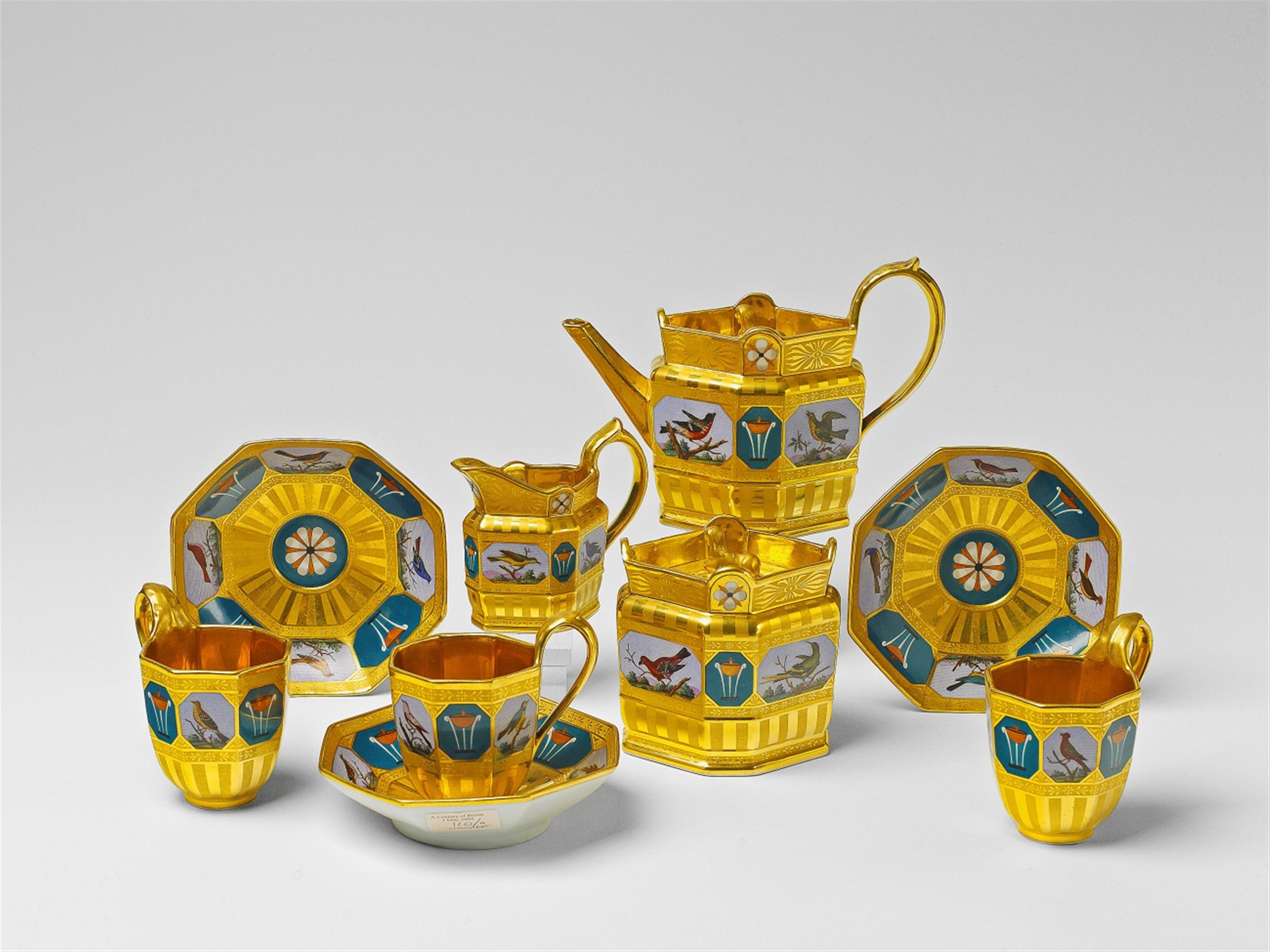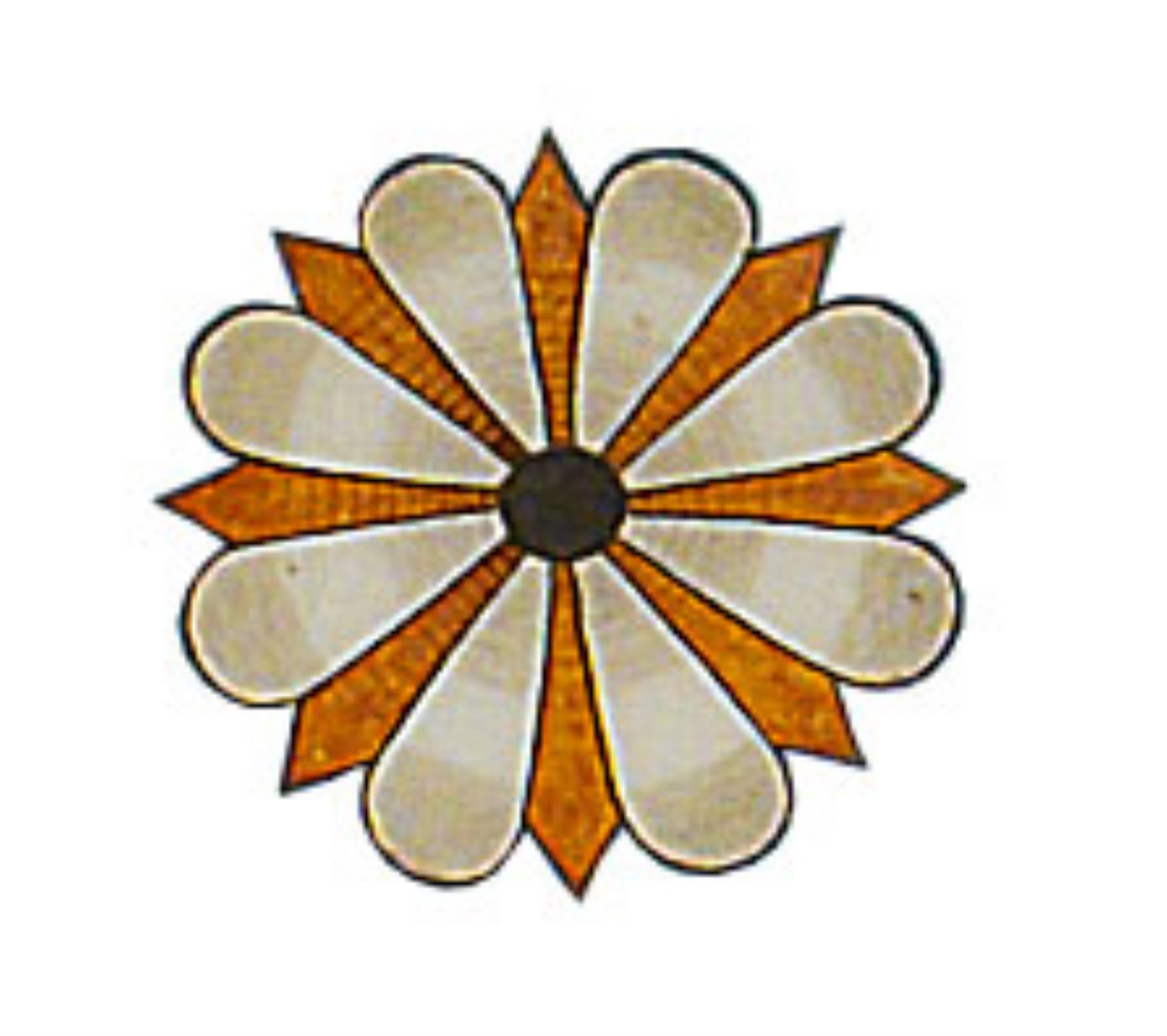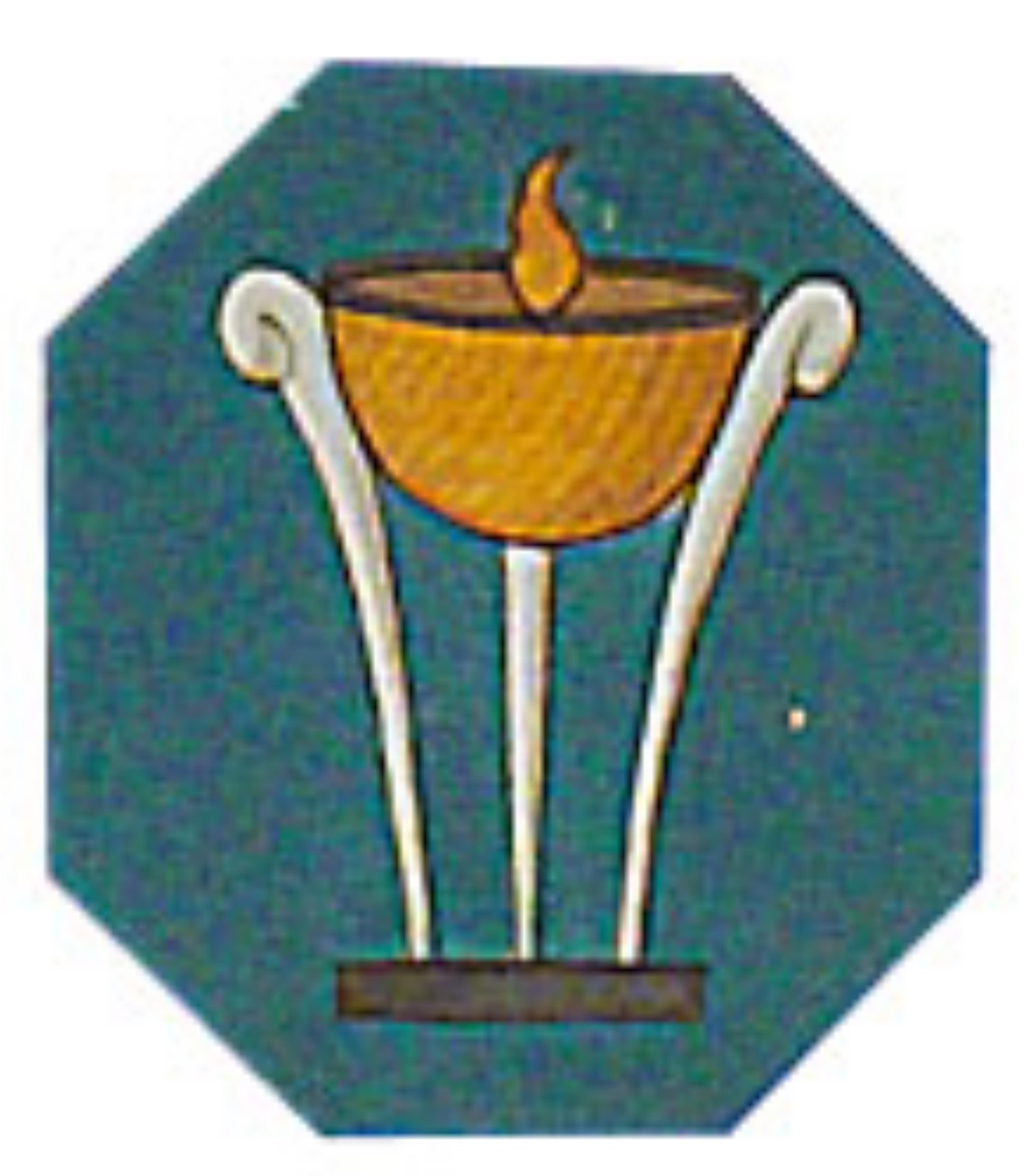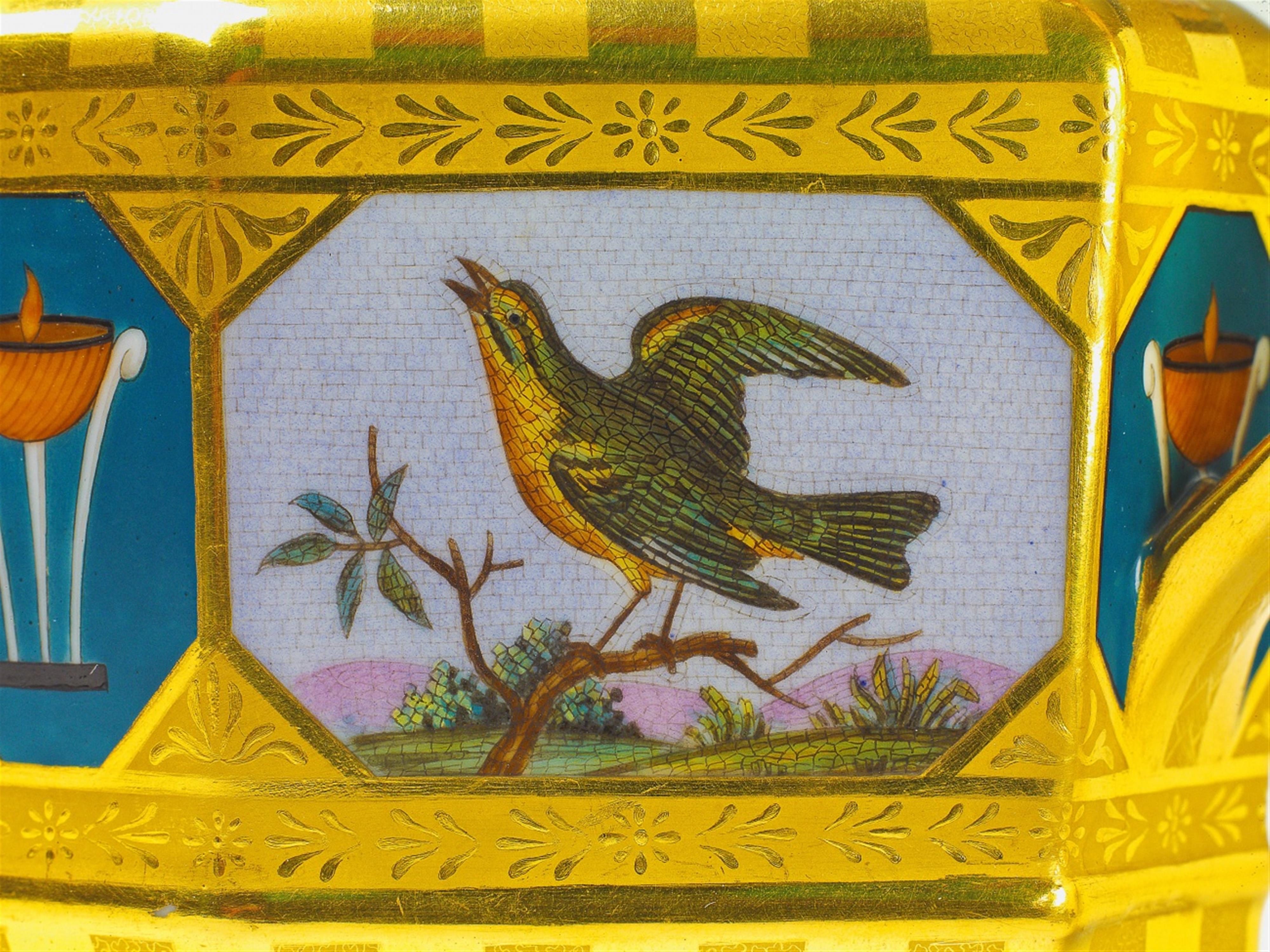A Berlin KPM porcelain tea service with faux micro-mosaic decor
Of octagonal form. Comprising teapot, milk jug, sugar box, and three cups and saucers. Two finials formed as recumbent sphinx. With reserves containing depictions of birds in imitation micro-mosaic and pietra dura technique on matte and polished gold ground. Blue sceptre mark, some pieces with additional painter's marks and various impressed marks. Minor restorations to the corners of the sugar pot's lid, a retouched chip to the teapot's spout. H of teapot 14 cm.
Circa 1820.
The influence of the works of Johann Joachim Winckelmann led to a resurgence in the techniques of micro-mosaic and pietra dura in Florence in the second half of the 18th century, and designs in this style became highly fashionable. The "opficio di pietre dure" began to carry out commissions for princely houses and wealthy collectors, but also created smaller items as Grand Tour souvenirs.
Encouraged by the Prussian crown's fascination with the Antique, and perhaps also influenced by the products of their competitors at Wedgewood, KPM also began producing designs in this taste. Their aim was to create objects that were both fashionable and opulent - a risky and laborious process. It is fascinating to note how the manufactory entirely eschewed transfer printing in their designs, instead relying on traditional techniques, with each individual mosaic stone being painted by hand. The form of this service also represents a creative novelty, combining the Neoclassical with elements of the fashionable Egyptian taste in elegant and innovative new shapes. The service is a rarity nowadays, and was a seminal moment of porcelain making during the reign of Frederick William III.
Provenance
Formerly collection of G. and H. Rohloff, Berlin.
Auctioned by Christie's London, A Century of Berlin, 1st May 2002, lot 110.
Literature
Illus. in: Köllmann / Jarchow, Berliner Porzellan, vol. II, Munich 1987, illus. 462, with a fourth cup.
The "missing" cup from this service now kept in the Twinight collection, illus. in cat.: Raffinesse & Eleganz, Munich 2007, no. 25. Here also two further services in this style (Nos. 27 and 28).








